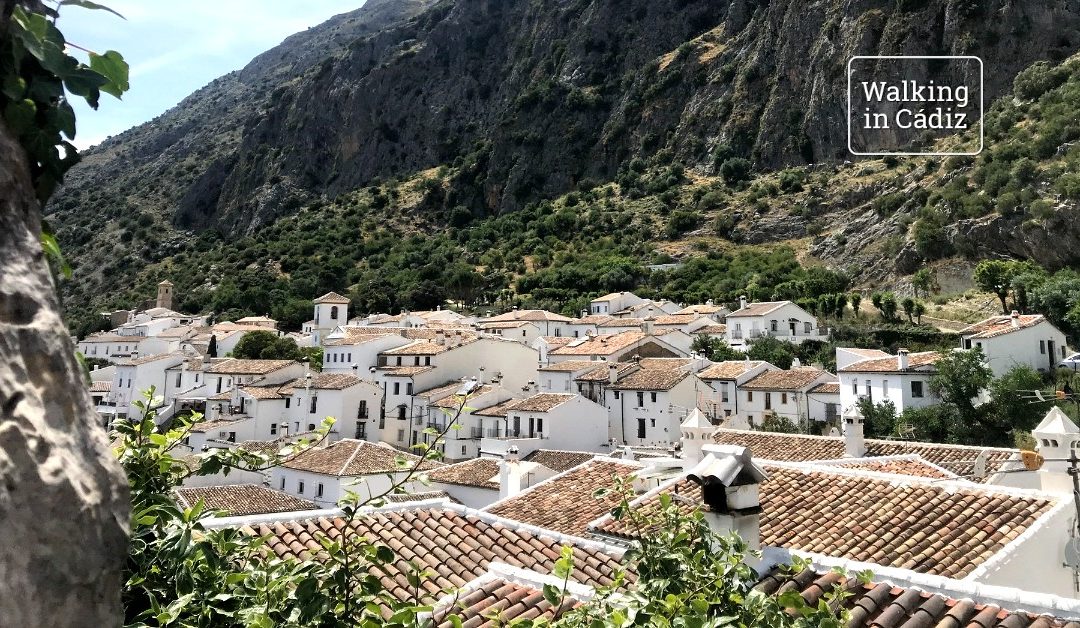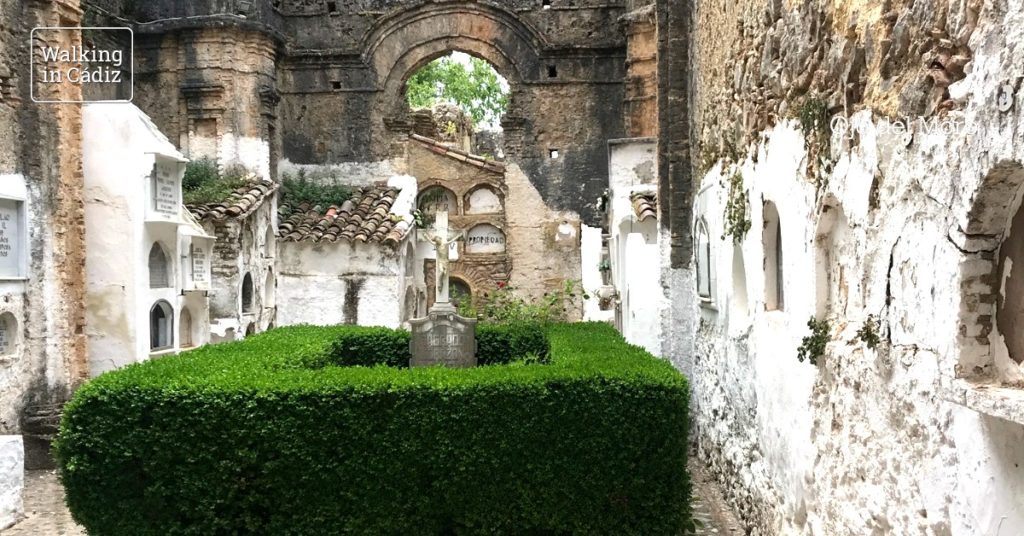Villaluenga del Rosario, a hidden gem in the mountains of Cádiz
The province of Cádiz has a variety of beautiful white villages, some very well known and popular, but also lost of hidden gems. One of them is Villaluenga del Rosario, the highest of them all – with amazing walks in the area – Let me take you there!
The highest but also smallest village of Cádiz!
Villaluenga del Rosario is the highest and at the same time one of the smallest villages of the province of Cádiz. It is situated at 858 metres above sea level and has 438 inhabitants. This beautiful mountain village lies at the foot of an impressive rock massif and is not very well known to the general public. But Villaluenga has some unique treasures, I’ll tell you all about it!
The drive to Villaluenga is delightful. We came from El Bosque and took just before ‘leather town’ Ubrique, the small road to Benaocaz and Villaluenga. At the beginning there is a turn-off to the Roman excavations of Ocuri that can visited by appointment. But we drove on. A narrow, winding country road through a wide, green mountain landscape with an abundantly flowering border in a hundred colours on either side of the road. Flowers, birds, butterflies, rolling, grassy meadows flanked by high peaks and nothing else. Spaciousness and tranquillity on this sunny Monday.
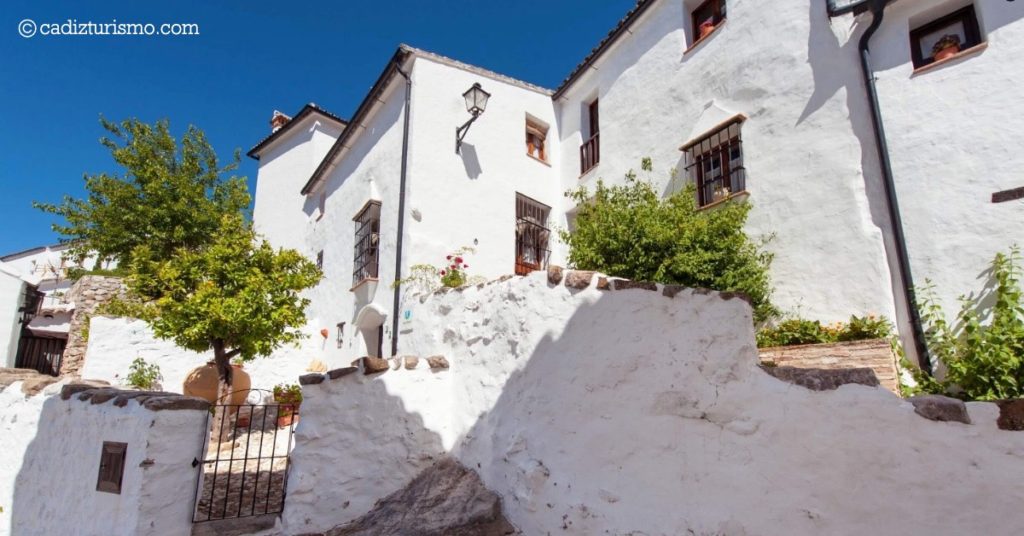
A pretty village and a church with a treasure
First we pass the village of Benaocaz, with its Moorish past and Aznalmara castle from the 13th century. Benaocaz is situated at 793 metres and has about 700 inhabitants. But we have to go further, even higher, through the broad valley. Then there’s Villaluenga, to our left, glued to the rock face. We park the car at the bottom of the village, between a ‘Venta’ and a cheese factory – not just any cheese factory! But you’ll hear more about that later…
When I first arrive in a village I look for the church. Because the church is always in the heart of the old village, most of the time surrounded by a little square with a bar to enjoy a cold beer. From afar, in the highest part of the village, we could already see a sand-coloured tower rising high above the whitewashed houses. That must be our church! So we wander through the narrow, deserted streets with their whitewashed walls and pots of colourful flowers. Here and there a cat scurries away and a dog starts barking as we pass by.
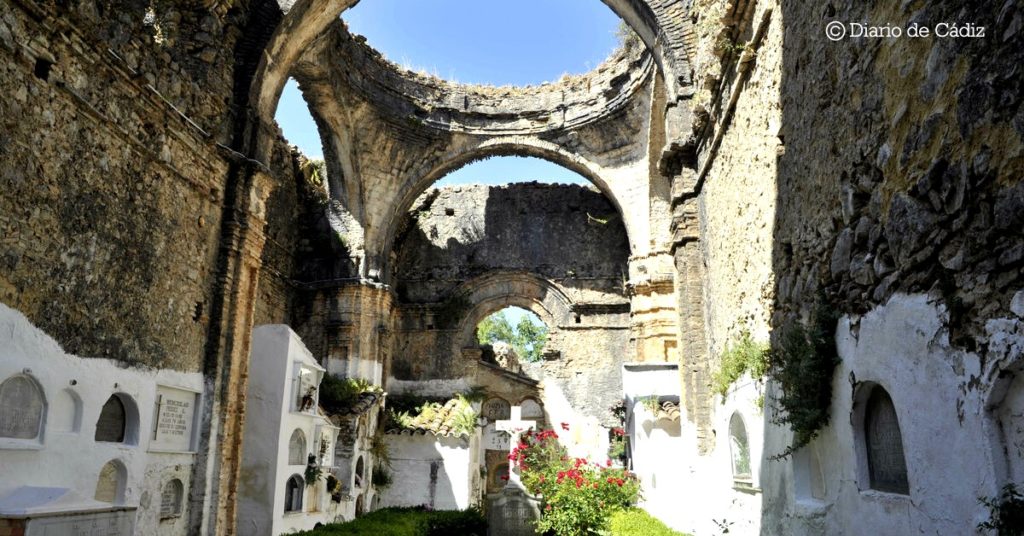
An enchanting cemetery between battered walls
When we reach the top, we see the remains of what must once have been a very beautiful church next to the old tower. But, to our surprise, between those battered walls and under a vault of domes, in the frame of the basilica, lies a lovely cemetery, an enchanting place! Rows of neatly maintained niches are built into the old church walls. They are decorated with flowers, real and plastic ones. Here reigns a benevolent peace. Through the centuries-old arches I stare up to heaven. A direct connection between the earthly and the heavenly. A unique place.
Research tells me that this Iglesia del Salvador was plundered and set on fire by Napoleon’s troops at the beginning of the 19th century. It burned so badly that a large part of the roof and vault was lost: only a few parts, such as the inner arch of the vault, the four portals and the high altar, were able to resist. In 1809, the villagers of Villaluenga decided to use the ruins of the church for other purposes. This was the date when the first funeral took place here. Over time, the old church was transformed into a beautiful place where niches and graves took over the space. Gradually, the old church of the Redeemer became the municipal cemetery. It was voted the most beautiful in Spain and is also included in the ‘Ruta de Cementerios de España‘.
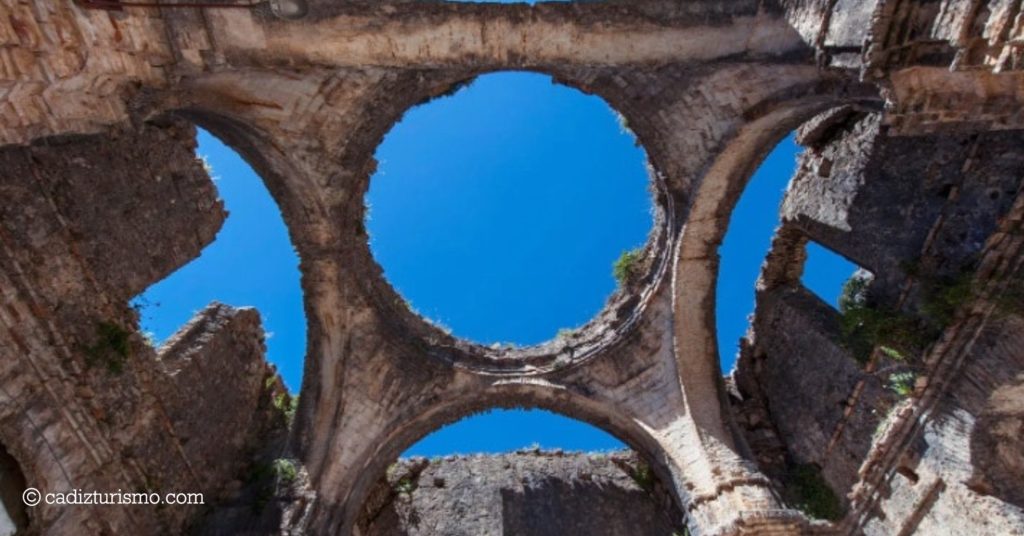
Tip: If you continue from here, out of the village, you can take the ‘Calzada Romana’, the old Roman path to the ‘Ermita de El Calvario’, a beautiful little chapel.
What else is there to see & do in Villaluenga?
- In the narrow streets of the old village you will find, among the whitewashed houses, a number of churches and chapels such as those of San Gregorio and Calvario. The San Miguel Church, located in the Plaza de la Alameda, is an 18th century temple with a Mudejar design and a baroque dome. It was consecrated on 21 November 1733 and has three naves separated by columns. It has beautiful carvings such as the Virgin of the Rosary, the Crucified Christ and a statue of the Infant Jesus from the 18th century.
- Villaluenga has one of the oldest bullfighting arenas in Andalusia. I didn’t go and see it because I don’t like this cruel entertainment but it seems to be special because it is not round but octagonal. I hope that nowadays they put on beautiful theatre performances!
- If Villaluenga is famous for anything, it is for its cheeses, especially those made from Payoya goat’s milk. The Payoya goat is an indigenous Andalusian breed of goat that is farmed in the Sierra de Grazalema and Serranía de Ronda Natural Park. The milk from this breed is distinguished by its excellent quality. The cheese is made by hand from goat’s milk from Payoya and sheep’s milk from Grazalemeña and is defined by a maturation period of 4 to 7 months.
- The Cheese Museum is located in Calle Albarrada and you discover all the secrets of this gastronomic delicacy through their guided tours and tastings. Don’t leave without buying one of the delicious cheeses!
- Every year in April, a traditional cheese fair is held in the village.
- The Waterfall of El Chorrero in Villaluenga del Rosario is a special natural phenomenon that you won’t see very often because it is usually dry. It can only be admired after very heavy rains.
- Cuevas de la Manga: One of the most striking landscapes in the mountains of Cadiz is this narrow pass that links up with the province of Málaga. The pass is about six kilometres long and in its slopes there are many caves. In some of them, remains from the Neolithic and Palaeolithic periods have been found.
Hikes in the Villaluenga and Benaocaz area
1. Sendero Ojo del Moro
This path of about 4.5 km (a short hour walk there and back) leads through limestone and stony terrain until it reaches an abandoned lime kiln. Lime kilns were furnaces where stone was turned into lime. A little further on you will come to the waterfalls of the Pajaruco stream, which lives up to its name because of the numerous birds that nest here. (Pajaro = bird) ‘Ojo del Moro’ is a special rock formation, a hole in the limestone rock where in a distant past there must have been a lookout point and which today looks like a goat shelter.
2. Salto del Cabrero
At Benaocaz starts one of the Sierra de Cádiz walking routes that has been on my wishlist for years (and at the time of writing I have not yet walked it!). This walk is only accessible from here, the south, as the pass from the north, at Puerto del Boyar is closed. So once you reach the Salto de Cabrero gorge, you have to go back. The distinctive silhouette of the Salto de Cabrero can be seen from many corners of the Sierra. With a length of over three kilometres, it is a walk of over four and a half hours (there and back) and of average difficulty. The salto del Cabrero (the goat herder’s leap) refers to a fault line of impressive vertical walls, eighty metres difference in height, with a fifty-metre wide gorge. read more
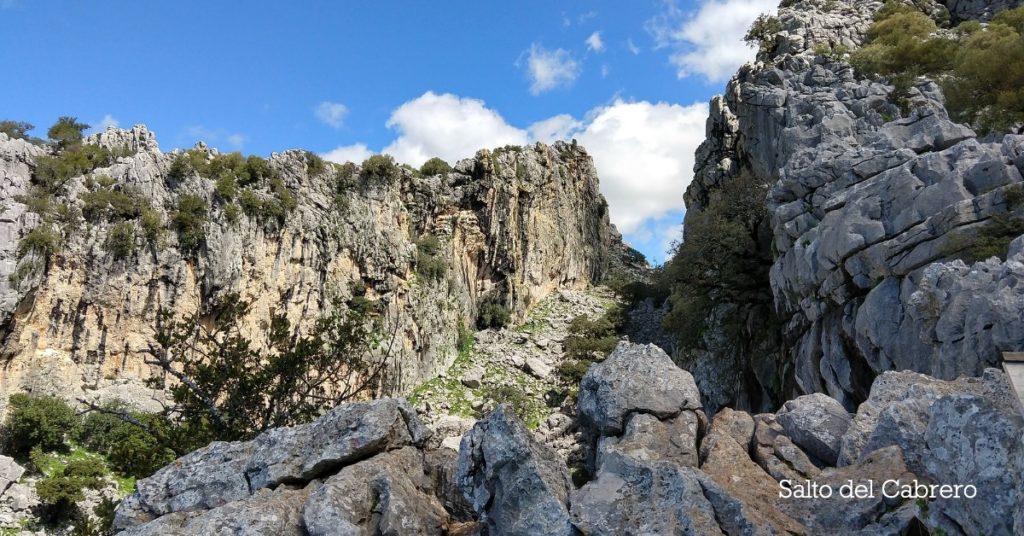
3. Route Villaluenga-Navazos de Caos
This walk links the village of Villaluenga del Rosario with the valley of Navazos de Caos, climbing the southern slope of the Sierra del Caíllo. The path starts at the back of the octagonal bullfighting ring. This route is quite tough, as from the start the path climbs almost 400 metres. Moreover, at some points when crossing the Sierra del Caíllo, the route becomes difficult as there are no marked paths here. Once at the top of the Navazos pass, you can enjoy spectacular views of the village of Villaluenga, the Llanos del Republicano, the Sima de Villaluenga, the Líbar massif and La Manga. At the top you can connect this walk with the (also tough) walk Navazo Alto or Caíllo to Benaocaz.
4. Villaluenga del Rosario to Llanos de Líbar
Another walk connects Villaluenga del Rosario with Llanos de Líbar, a 13-kilometre route that links the three main villages of the Sierra de Grazalema: Villaluenga, Llanos del Republicano and Llanos de Líbar. A shorter version is the sendero LLanos del Republicano, a fairly easy, linear walk of 6.5 km with about 240 metres difference in altitude.
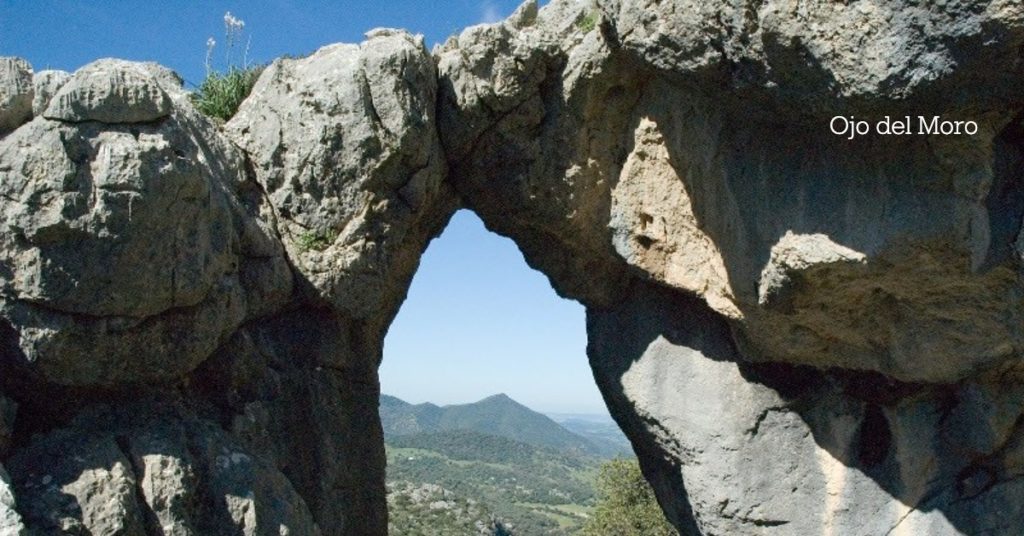
Anne Middelkamp
9 june 2022


